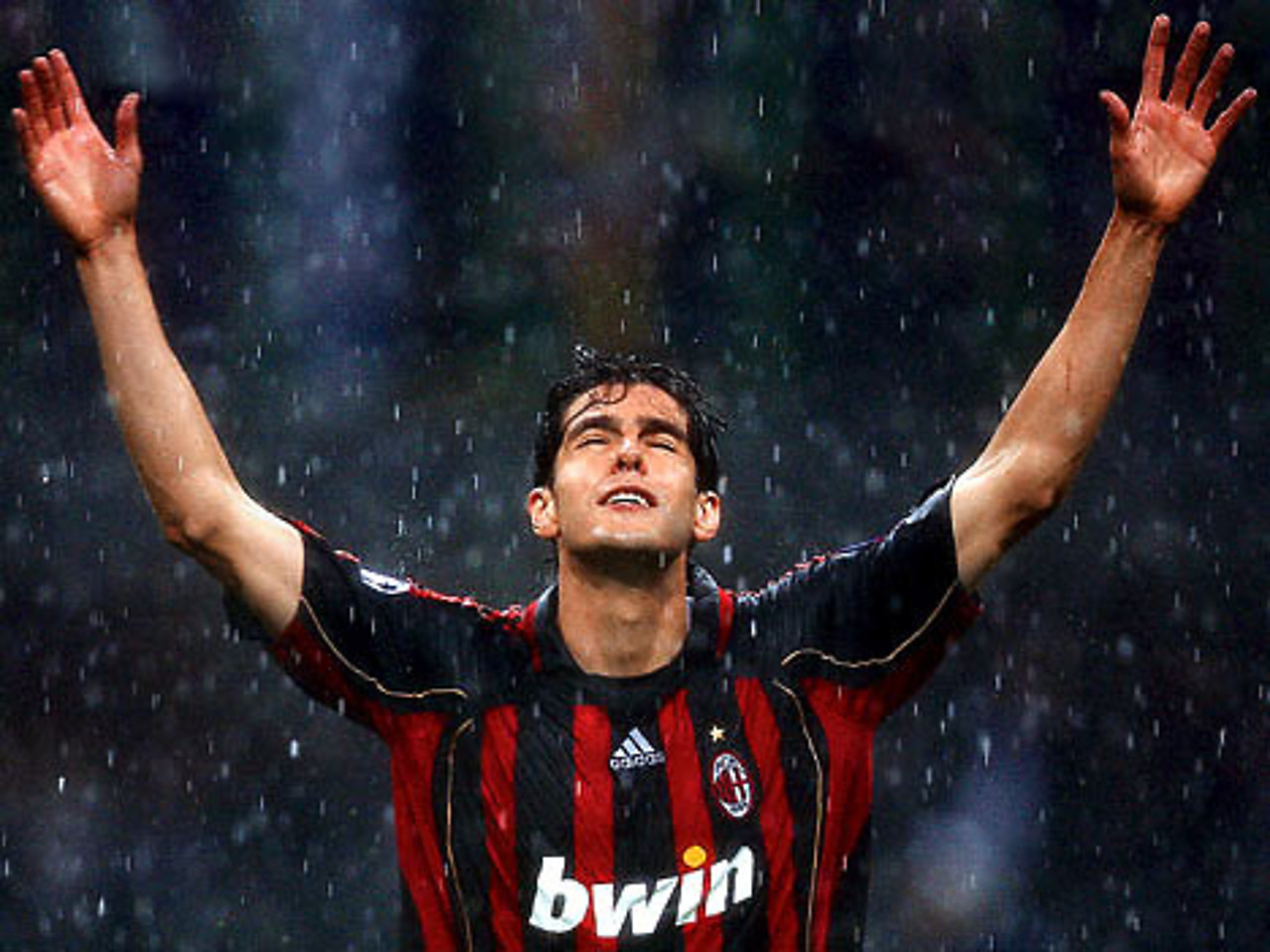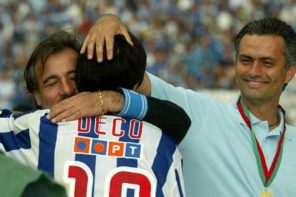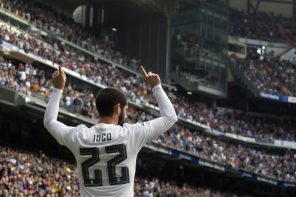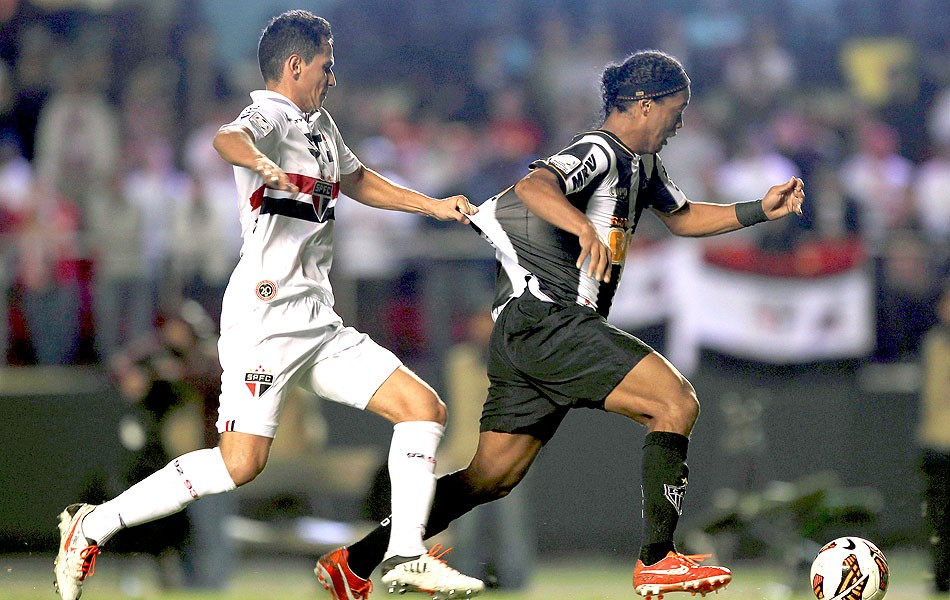Two former greats show it can be done
He had daydreamed of this moment for far too long, but at last, it had arrived.
Probably not long after his brief world record €64m deal was signed in June 2009, Kaká wondered if he would ever hear the words sung by those who remained firmly within his heart. And with each passing weekly disappointment – be it yet another niggling injury, or, more often than not, a severe loss of confidence and form – those words echoed away into the distant corners of his mind.
Until suddenly, back on familiar turf, he remembered exactly how to make those adoring words belt down from the crowd. Receiving a pass on the edge of the penalty area and cutting inside, Kaká curled a powerfully accurate shot into the opposite top corner of the net.
“Siam venuti fin qua per vedere segnare Kaká,” the San Siro faithful cried – “We came here to see Kaká score.”
And so finally, wearing the famous red and black of Milan once more, he obliged them.
Whilst it is easy to get caught up in the romanticism of it all, there remains many a sceptic who are unwilling to get carried away with the inevitable ‘Kaká is back’ headlines which followed his first goal for Milan since returning to Serie A – and with good cause.
Was it mere muscle memory that functions occasionally from a misfiring champion of past times, or could it really be the return of a hero, ready to reclaim what once was his – greatness?
As of yet, there still isn’t much evidence to support the latter.
Despite rolling back the years with a strike that was commonplace for the Brazilian number 10 prior to 2009, his form since returning to Milan has been disappointing. Aside from, ironically, two highly promising and determined Champions League matches against Barcelona, when he tormented his former club’s arch-rivals by creating two goals, Kaká had looked destined to continue his malaise despite being back where he is adored.
‘Reheated Soup’ the Italians call it; something which usually tastes worse the second time around. That particular view was quickly reinforced when in only his first match back for Milan, he lasted barely 60 minutes; succumbing to yet another niggling injury which besieged his time in Madrid, thus ensuring that particular transfer would go down in history as one of the biggest flops – costing Los Blancos somewhere in the region of €150 million during his stay.
Money was never seen as a motivating factor for Kaká’s transfer however. The player famously cried when the mere mention of a transfer away from Milan was mooted back in 2009 and only ended up moving because the Rossoneri needed the money. When agreeing to return from Madrid, he immediately accepted a 40% pay cut.
Still securing a sizeable income, when injury instantly struck on his return, Kaká immediately announced that he would not accept a wage whilst he could not play. An admirable gesture, sure, but those reheated soup jibes were gaining further momentum.
So, is there outside evidence to suggest a player, or rather, a playmaker – and not just any old playmaker, one who reached such heights as to comfortably win a Ballon d’Or – one who was widely acknowledged as the world’s best, could recapture anything like his imperious form on a consistent basis – even at the wrong side of age 30, and having endured a sustained period of disappointment?
Kaká doesn’t have to look too far for successful examples.
As the country that gave birth to the renaissance, Italy have had their fair share of rebirths, and no playmaker represents overcoming extreme adversity more than Roberto Baggio.
A Golden Ball winner and World Player of the Year in 1993, Baggio was ruler of all he surveyed despite constantly battling injury throughout his career. The severe setback of that penalty miss in 1994 would have finished many a talented career, especially after the shocking treatment he then endured at the hands of certain coaches who’d lost faith in his abilities during those subsequent years.
Only rumours of his demise were premature.
Baggio rose time and again to prove those who were in charge wrong for dismissing his ethereal powers, which remained permanently with him well past his 30th birthday. A deserved recall to the national team for the 1998 World Cup ultimately saw him drastically underused in preference to a younger, yet out of form Alex Del Piero.
After earning a move to, then enduring yet more difficulties at Inter (although he did achieve a Gazzetta dello Sport feat which no other player has), il Divin Codino finally came to rest at modest Brescia, who had never remained in Serie A for consecutive seasons. With Baggio, they were never relegated, even fighting for European places during his time. And despite succumbing to yet another ‘career ending’ whilst enjoying some of the best form of his career at 35 years of age, the popular number 10 recovered in record time and had the country begging for his inclusion into Italy’s 2002 World Cup squad.
Well into his late thirties, Roberto Baggio continued to score and create at a rapid rate, eventually ending his career as the fifth highest scorer in Serie A history.
More recently, Brazil had another of their very own former Ballon d’Or winner enjoy a sustained renaissance when many had already tossed him on the scrap-heap and consigned his name to history. Yet, despite that Ronaldinho emerged again, inspiring Atletico Mineiro to their first ever Copa Libertadores crown whilst producing some of the best form of his career – not seen with any real consistency since pre-2006 in Barcelona, when he stood head and shoulders above everyone else in world football.
Be it too much self-indulgence, a falling out with the love of the game or a sense that all had been achieved in his sparkling career, Ronaldinho lost his way after leaving the Catalan club. Somewhat ironically, not even a Milan link-up with Kaká – who by then had usurped him as Brazil’s number 10 – returned his spark. Not being included in the 2010 World Cup squad was a huge blow for the player who managed to rack up some impressive stats during his second season in Serie A, despite being a shadow of himself. Now the wrong side of 30, unwanted and dejected, he finally returned to his homeland which many believed signalled the end of an illustrious career.
Only it wasn’t.
A promising start back in Brazil threatened to derail as a payment dispute forced Ronaldinho to leave Flamengo after only a season, however after surprising everyone by choosing to join Atletico Mineiro, the fantasista led them to a second place finish in the Brasileirao following an unbeaten State Championship victory. The number 10 (and for a period, number 49) continued his remarkable renaissance as the focal point of an exciting, attacking team which went on to win the Copa Libertadores this year.
What was notable about Ronaldinho’s recaptured form which harked back to his old days in Catalonia was the level of maturity he showed, and positive influence he had on young playmakers such as Bernard.
Winning Brazil’s Golden Ball, the clamour inevitably started for him to be re-included back with the Seleção. Despite winning a call-up for a friendly earlier in the year, he was not selected for the country’s Confederations Cup squad – but still clings to the hope of making the World Cup squad, and possibly a battle with Kaká, for a place.
Over to you, Kaká.









1 Comment